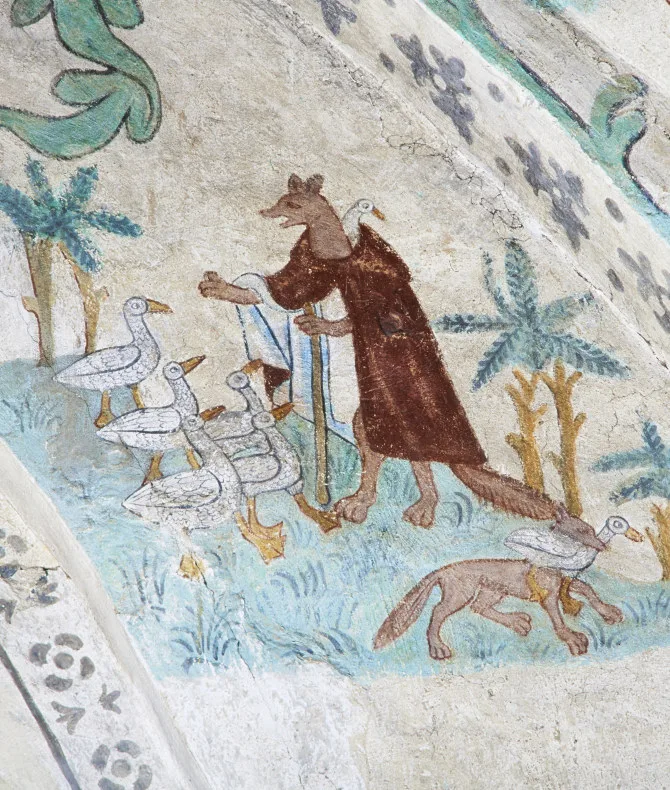The history of Scandinavian Christmas traditions
Christian Christmas celebrations in Sweden began in the twelfth century, though it was not until the 18th, and above all the 19th century, that they assumed the form familiar today. The very word jul comes from Old Norse jól or Yule, with no link to Jesus. Some connect it with Odin, who in certain sources is called Jólnir, suggesting an important role in pre-Christian festivities.
Santa Claus, or Father Christmas, has however nothing to do with Odin. His origins lie in the Dutch Sinterklaas tradition, derived from Saint Nicholas, which later spread to the United States and across the world.
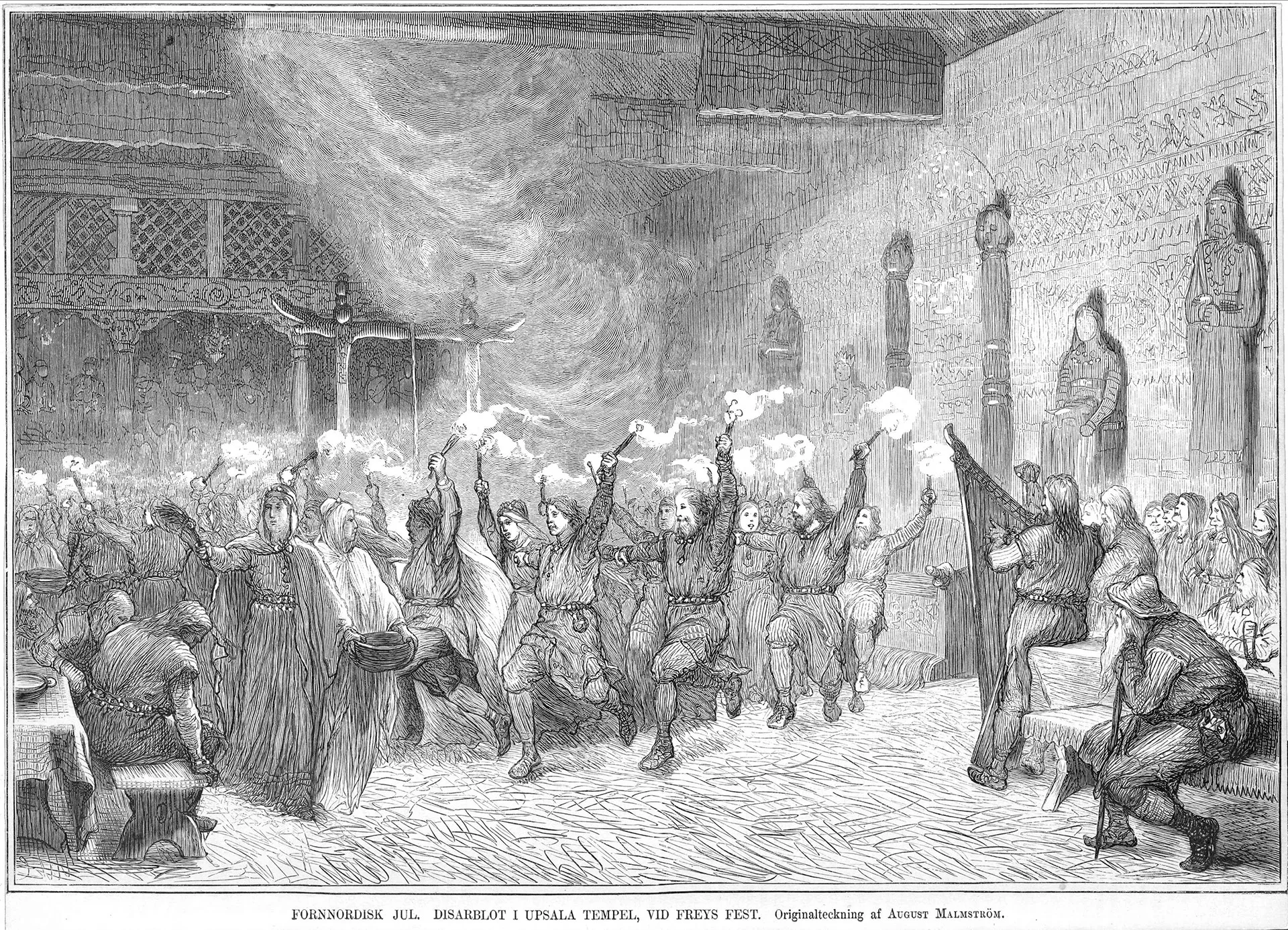
The Viking celebration jól
The Icelandic chieftain, politician and historian Snorri Sturluson (1179–1241) describes in his Heimskringla how the Vikings celebrated jól. Originally observed in mid-January, the pagan feast was shifted to coincide with Christian Christmas in the tenth century.
The Vikings feasted for several nights, drinking ale and mead to honour the gods. They travelled long distances to celebrate together, eating pork and other delicacies from their stores. Some scholars think the festival coincided with the winter solstice as a kind of sun-feast. How much of Viking custom survived is debated, but traces can be found in Swedish traditions where Christian and pagan practices merged.
Christmas in the Middle Ages
In Sweden today, Christmas Eve is the main day of celebration, though elsewhere Christmas Day remains central. In the Middle Ages, the days before major feasts were marked by vigilia, “vigils” of prayer and reading. Christmas Eve was a day of preparation, often fasting.
Ham and fish on the Christmas menu
On Christmas Eve, Swedes ate lye fish (lutfisk). Ham was reserved for Christmas Day. Records from Bishop Hans Brask of Linköping in the early 1500s show Christmas Eve tables laden with fish dishes, while on Christmas Day “the platters of ham ran down the length of the table.”
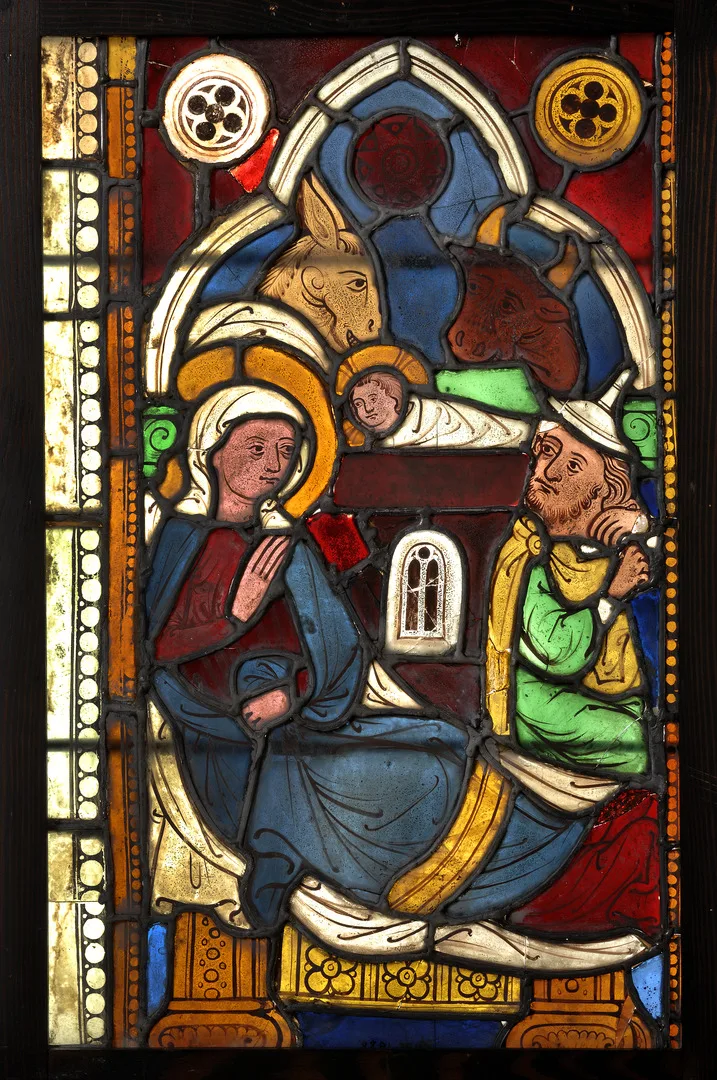
The birth of Christ
Stained glass from Klinte church, Gotland.
Christmas Day
The 25th of December, celebrating Christ’s birth, was one of the greatest feasts of the Church year. Christmas ran until Epiphany, when the Three Wise Men revealed Christ to the world. The first four days of Christmas were public holidays and therefore work-free, but many people probably used the days to go to church. Three masses were held on Christmas Day itself.
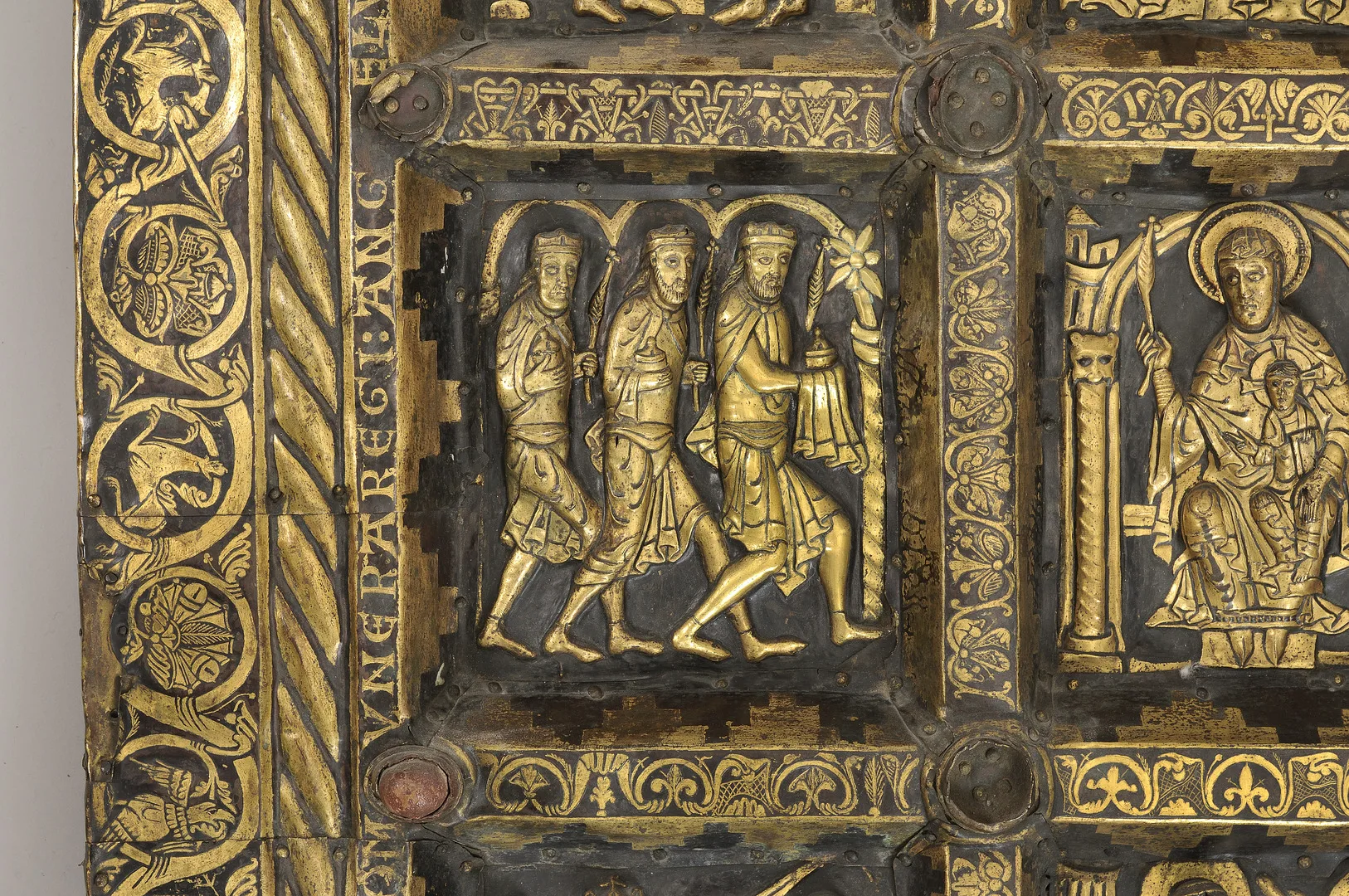
The Three Magi
Detail of an antemensale
On view at Historiska museet in the exhibition Medeltida konst
Three Wise Men: Caspar, Melchior and Balthasar
The Wise Men, or Magi, are briefly mentioned in the Gospel of Matthew, who writes that they followed a star from the East to honour the newborn King of the Jews with gifts of gold, frankincense and myrrh. Later tradition turned them into kings, symbols of youth, maturity and old age, and of different parts of the world.
A medieval altarpiece from Österåker, Sweden was once displayed in Stockholm Cathedral and is now on view at the Swedish History Museum. It shows the wise men presenting gifts to the Christ Child. In one panel, an elderly king kneels bareheaded, crown removed, while the curious child fingers treasures of gold. The altarpiece was created in Lübeck and consecrated in 1468.

The relics of the wise men, said to be their bodies, were moved from Constantinople to Milan, and in 1164 seized by Emperor Frederick Barbarossa and transferred to Cologne. There, between 1181 and 1220, a magnificent shrine was created to house them. It was the largest of the Middle Ages and Cologne became a great centre of pilgrimage. The kings were revered as patrons of travellers; Inscribing their names on rings or vessels was thought to protect travellers.
Was there a Star of Bethlehem?
There are different theories about it. One is that it was a comet, another that it was a supernova – an exploding star. A third theory is that it was the planets Jupiter and Venus which, at the relevant times (the summers of 3 and 2 BC, now considered the most likely actual time of Jesus’s birth), appeared so close together that they seemed like a single, brightly shining celestial body; the same was true of Jupiter and the star Regulus. It seems likely that the wise men, who may be understood as astrologers, interpreted this as significant signs in the sky.

What were frankincense and myrrh?
The three wise men brought precious gifts to the newborn child. Frankincense is made from resins that give off a pleasant scent when burned and is used in many religions. Myrrh was a kind of medicine believed to cure almost anything. In the Swedish Encyclopaedia (Svensk uppslagsbok) from 1951, myrrh is described as the hardened secretion from a species of small trees growing in southern Arabia and East Africa. The myrrh forms small, irregular reddish lumps consisting of resin, gum and volatile oil. In Sweden, January 6 is known as the name day for Caspar, Melchior and Balthasar.
Medieval Christmas textiles
Among the treasures of the Swedish History Museum are twenty-four embroidered textile roundels once adorning a silk chasuble or cope. These depict scenes from the life of Christ in gold, silver and silk, probably made in France in the later 12th century.
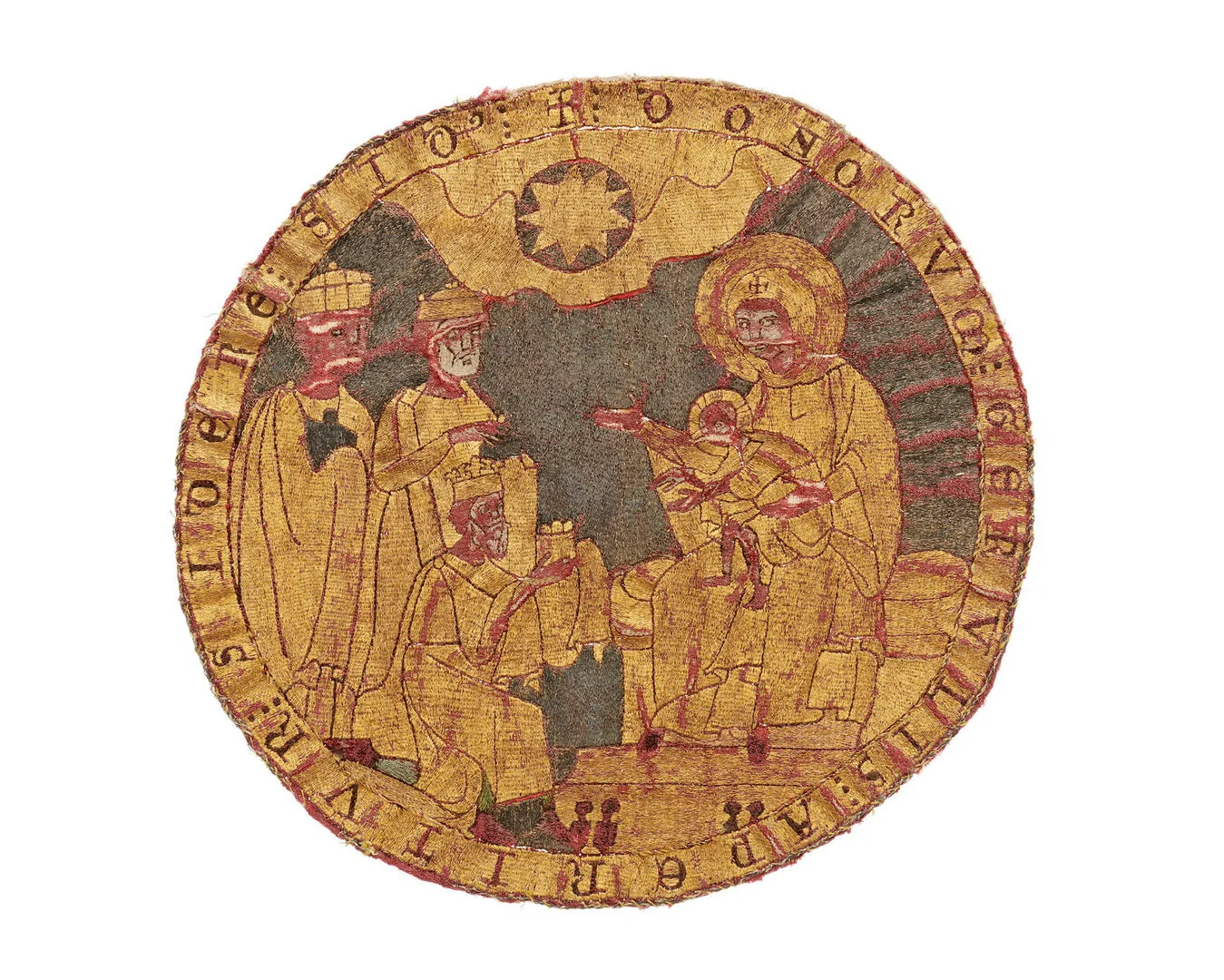
Embroidered roundel
The roundels, about 28 centimetres across, once used in Uppsala Cathedral, later adorned an altar frontal in Biskopskulla Church in Uppland. The backgrounds are worked in silver, while the figures are mostly in gold, with details such as faces, hands, feet and outlines in silk. Much of the original silk is missing today, and the red silk fabric that forms the base of the embroidery shows through in areas that were once embroidered with silk. This is why some of the figures, for example, appear slightly red in the face.
The embroidery techniques used are couching for the gold and silver threads and split stitch for the silk. The finely executed roundels are believed to have been made in France in the latter part of the 12th century.
Purchased in 1871, they are now preserved separately. Their gold and silver threads remain brilliant, though much silk has decayed, leaving the red silk ground visible beneath. They testify both to the splendour of medieval worship and to Christmas as one of the great festivals of the age.
